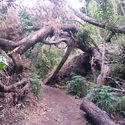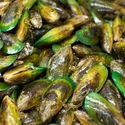In this Connected article scientist Hannah Rainforth investigates kākahi, Aotearoa New Zealand’s threatened freshwater mussels in the Whanganui River, to find whether the evidence supports claims by local kaumātua that kākahi have nearly disappeared.
Key nature of science ideas profiled in this article are:
- scientists’ ideas and explanations are supported by evidence
- evidence is based on observations of the natural world
- scientists use evidence to support or revise their predictions and explanations.
Use this article to explore how species survival is dependent on reproduction and that environmental changes in an ecosystem may also impact survival rates. Hannah’s research showed the value of utilising local mātauranga Māori to help with scientific research.
Teacher support material
Check your school library for the article from the 2014 level 3 Connected journal ‘Why is that?’, download it as a Google slide presentation from Tāhūrangi or order it from the Ministry of Education.
The teacher support material (TSM) can be downloaded from Tāhūrangi (Word and PDF files available). It includes the learning activities – Getting the full picture, The life cycle of kākahi, Tōku awa koiora and Become a citizen scientist – along with related resource links. You can adapt these activities to make the focus on the nature of science explicit and to also support students to develop the capabilities of using evidence to support ideas and interpreting representations.
Related content
Read about Amber McEwan’s research on whether mātauranga Māori could help save New Zealand’s freshwater mussels.
Discover more about mussels.
Tōku awa koiora – introduction curates resources about the Waikato River ecosystems and the iwi, researchers and scientists who are working to restore and protect the health and wellbeing of the Waikato River.
Compare the life cycle of kākahi with those of whitebait and longfin eels.
Learn about native and exotic Freshwater fish of New Zealand (this is also available in te reo Māori).
The help of citizen scientists was invaluable in collecting data for this research project. See our Citizen science section for a range of projects that could be used in the classroom, including Marine Metre Squared (MM2).
Check out our entire range of Connected articles here. We’ve curated them by topic and concepts.
Useful links
Find out more about kākahi in this National Geographic article What is killing the kākahi?
Read the Stuff news article about Hannah’s research project.
The Whitebait Connection is a community conservation education programme and its coordinators will come to your school to help plan and integrate the programme into your curriculum. Students take part in hands-on exploration of their local freshwater environment and then take action to preserve it.
Find out how community volunteers learn about kākahi populations in Lake Wairarapa. It is part of a longitudinal citizen science study led by freshwater ecologist Amber McEwan.
The Connected journals can be ordered from the Down the Back of the Chair website. Access to these resources is restricted to Ministry-approved education providers. To find out if you are eligible for a login or if you have forgotten your login details, contact their customer services team on 0800 660 662 or email orders@thechair.education.govt.nz.
Acknowledgement
The Connected series is published annually by the Ministry of Education, New Zealand.








